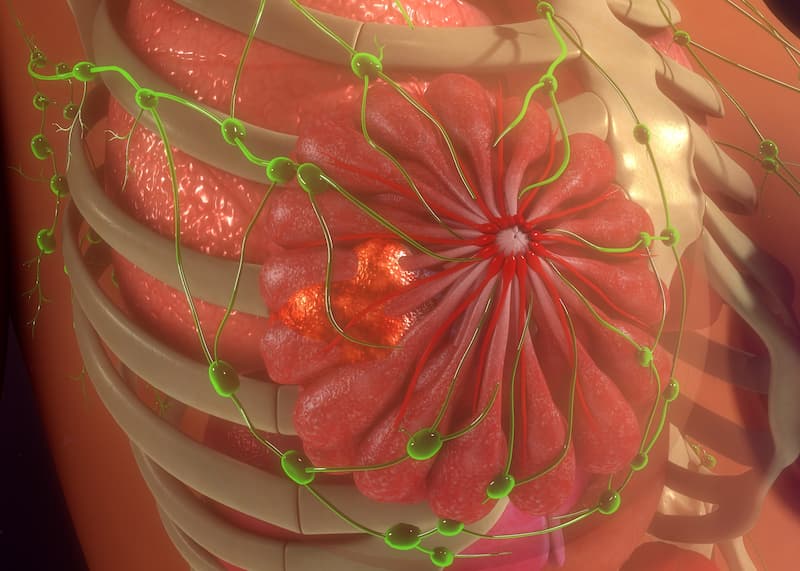SP-1-303 Shows Promise for ER+ Breast Cancer Cell Growth Inhibition
SP-1-303’s ATM-activating and HDAC-inhibiting properties may overcome limitations seen in prior attempts to combine therapeutic agents and HDAC inhibitors.
"Further preclinical studies of SP-1-303 will determine its potential for breast cancer treatment," according to the study authors.

SP-1-303, a dual-targeting class I histone deacetylase (HDAC) inhibitor and ataxia-telangiectasia mutated protein (ATM) activator, was found to inhibit growth of estrogen receptor (ER)–positive breast cancer cells, according to findings from a study published in PLoS ONE.
Data from the study show that SP-1-303 differentially inhibits ER-positive breast cancer cell growth with effective growth inhibition concentrations ranging from 0.32 to 0.34 µM for MCF-7 and T47D cells, lower than both triple-negative breast cancer cells (1.2-2.5 µM) and normal breast epithelial cells (~12 µM). Additionally, SP-1-303 induced ATM and BRCA1 and p53 substrate phosphorylation while decreasing ER-alpha (ER-a) expression and increasing p53 expression in ER-positive breast cancer cells. Lastly, an area under the curve (AUC) of 5227.55 ng/ml x h with a 1.26 h elimination half-life was demonstrated through pharmacokinetic evaluation following intravenous administration.
HeLA cell extract was utilized with in vitroHDAC enzyme inhibition assays for pan-HDACs with the Fluor-Lys substrate. Expressing epitope-tagged full-length proteins in the sf9 baculovirus expression vector system produced purified HDAC1, HDAC3, and HDAC6 recombinant proteins for isoform assays.
For in vitroHDAC assays, reactions were set up in 96-well plates with a total volume of 50 µL HDAC assay buffer containing HDAC1, HDAC3, or HDAC6 for a brief period. The addition of HDAC substrate at room temperature commenced a reaction that proceeded for 30 minutes. Then, an addition of 50 µL of Fluor de Lys Assay Developer marked reaction termination.
In cytotoxicity assays, a 48-hour drug treatment with SP-1-303, SAHA (vorinostat; Zolinza) and tamoxifen at concentration ranges of 0.25 to 0.5 M followed 24-hour cell seeding in a 96-well plate in doublets.
SP-1-303 was used for cell treatment in 24-, 48-, and 72-hour intervals. Cells were harvested at indicated times, washed with cold phosphate-buffered saline (PBS) 2 times, and left overnight fixed with a citrate and DMSO buffer. Then, resuspension of cells in PBS containing 40 μg/ml of DNase-free RNase A and 50 μg/ml of propidium iodide commenced, with fluorescence-activated cell sorter (FACSort) measuring cell cycle distributions.
Investigators assessed pharmacokinetics through intravenous administration of study agent in a rat model. A final concentration of 2 mg/ml was achieved by dissolving the study agent in 5% DSMO plus 40% PEG400 and 55% PBS. A tolerated dose of 20 mg/kg was intravenously administered to respective rats.
Blood samples were collected immediately following drug administration and at 1, 2, 4, 6, and 8 hours afterwards via the jugular vein under general anesthesia. Samples were placed in K2EDTA tubes, and plasma was obtained following 8000 rpm centrifuge for 6 mins. The plasma was subsequently analyzed by LCMS.
IC50 values of SP-1-303 for activity inhibition of HDAC1 and HDAC3 were 12 nM and 14 nM respectively. Additionally, they were 120 nM and 435 nM, respectively, for pan-HDACs and class II HDAC inhibition.
SP-1-303 treatment exhibited significant ATM/S1981 phosphorylation within a half hour of cell exposure. Additionally, immunocytochemical analysis supports ATM activation following a 4-hour treatment.
“Our findings characterize SP-1-303 as a novel, second-generation class I HDAC1 and HDAC3 selective HDAC inhibitor, exhibiting ATM activation and modulation of ER expression, resulting in substantial growth inhibition of [ER-positive breast cancer] cells. Notably, SP-1-303 demonstrates significantly reduced toxicity to normal breast epithelial cells [40-fold lower toxicity compared with cancer cells]. Further preclinical studies of SP-1-303 will determine its potential for breast cancer treatment,” Mira Jung, of the Department of Radiation Medicine at Georgetown University School of Medicine, and coauthors concluded.
Reference
Jung, M, Nicholas N, Grindrod S, Dritschilo A. Dual-targeting class I HDAC inhibitor and ATM activator, SP-1-303, preferentially inhibits estrogen receptor positive breast cancer cell growth. PLoS One. Published online July 15, 2024. doi:10.1371/journal.pone.0306168
Newsletter
Stay up to date on recent advances in the multidisciplinary approach to cancer.